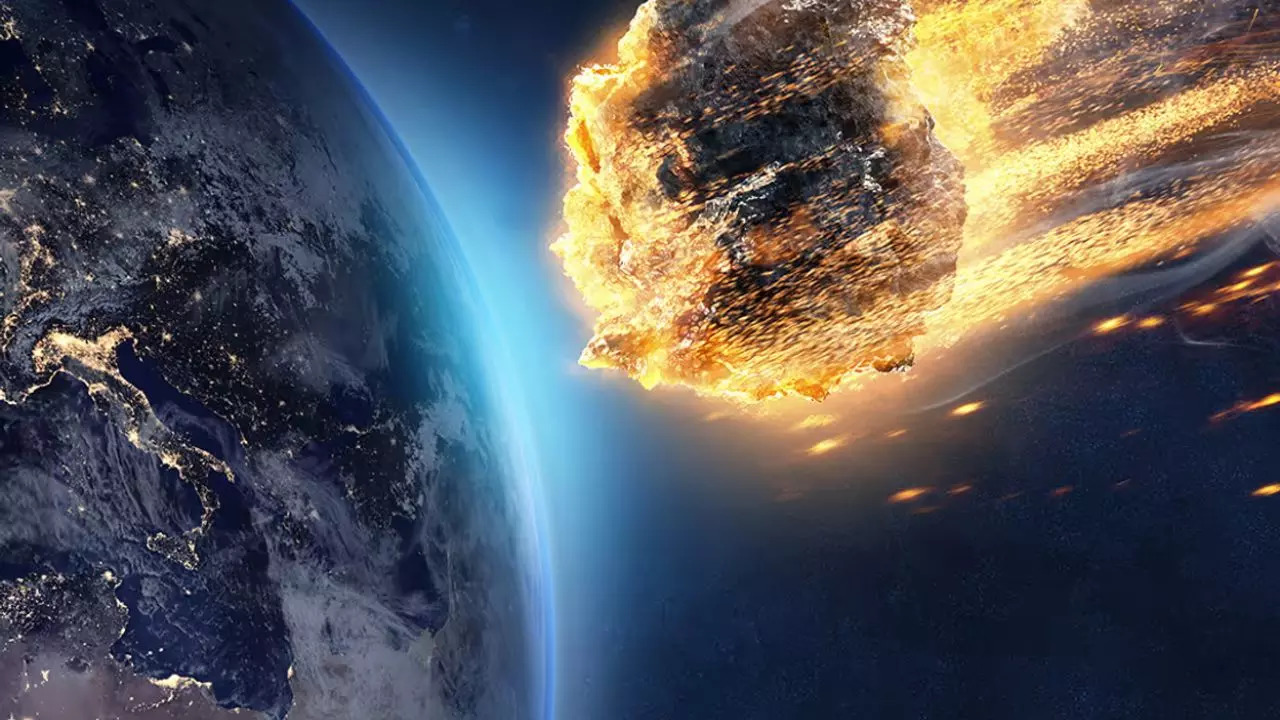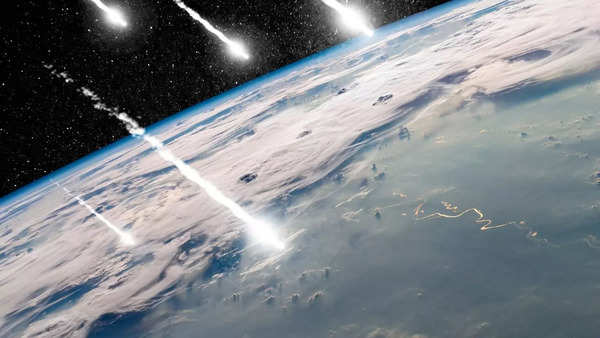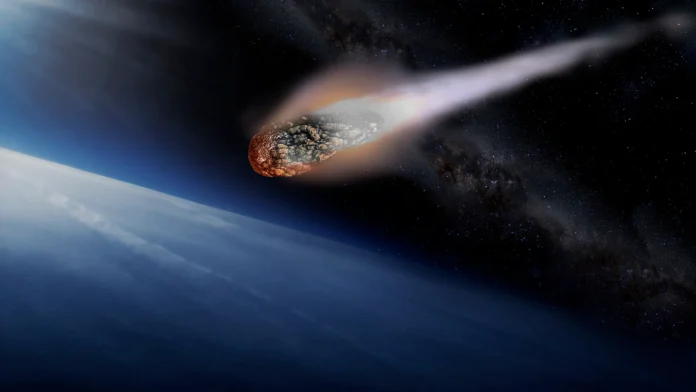In a startling event, an asteroid struck Earth just hours after its detection, marking the third such ‘imminent impactor’ in 2024 alone. This sudden collision has highlighted the urgency of enhancing our planetary defense capabilities and has sparked concerns over how prepared humanity is to detect and mitigate future threats from space. The asteroid’s unexpected impact serves as a reminder of the vulnerabilities we face from objects hurtling toward Earth from the depths of space.
A Sudden Discovery and Swift Impact
Astronomers detected the asteroid just hours before it made impact. Unlike larger celestial objects that are usually tracked for days, weeks, or even years in advance, this asteroid’s presence was only realized shortly before it entered Earth’s atmosphere. While the object was relatively small, its sudden arrival and swift impact underscore the challenges astronomers face in monitoring and predicting the paths of smaller, fast-moving objects in the cosmos.
The asteroid, which was under 10 meters in diameter, burned up upon entering the atmosphere, creating a bright streak of light visible to those in the area of impact. While it didn’t cause any serious damage, the incident left a lasting impression on those who witnessed it, as well as on the astronomical community tasked with detecting these celestial bodies.

What Is an ‘Imminent Impactor’?
The term ‘imminent impactor’ is used to describe an asteroid or other celestial object detected just before it collides with Earth. These objects are typically smaller and often evade early detection due to their size and speed. When they are discovered, they are already on a collision course with our planet, leaving little time for any intervention or defensive action.
The phenomenon is rare, but 2024 has already seen three such imminent impactors. Each of these incidents has raised awareness about the limitations of our current detection capabilities and the need for improved monitoring systems.
The Growing Frequency of Close Encounters
While Earth has long been bombarded by space debris, the recent uptick in imminent impactors has raised questions about the frequency of close encounters. Are these events becoming more common, or has improved technology simply made it easier to detect smaller objects?
Astronomers explain that advancements in telescope technology and tracking algorithms have made it easier to spot smaller asteroids. However, there is still a significant gap when it comes to tracking objects under 10 meters in diameter. These small objects often go undetected until they are dangerously close to Earth. The recent impacts highlight a critical gap in our understanding and preparedness for potential asteroid threats.
Why Are Smaller Asteroids Harder to Detect?
Detecting smaller asteroids presents a unique set of challenges. Unlike larger asteroids, which reflect more sunlight and can be tracked from greater distances, smaller objects are often too dim to be seen until they are very close to Earth. Their smaller size and speed make them difficult to monitor, and they can easily evade detection by current telescopes and radar systems.
The unpredictability of these small but fast-moving objects means that astronomers often have just hours or even minutes to track and assess their impact trajectory. As seen with this recent asteroid, the time between detection and impact is often too short to take any meaningful action. This reality has fueled calls for increased investment in asteroid detection systems, particularly those capable of spotting smaller objects.

The Role of Planetary Defense Initiatives
NASA, the European Space Agency (ESA), and other space organizations worldwide have been working on improving planetary defense mechanisms. One major initiative is NASA’s Planetary Defense Coordination Office, which is dedicated to identifying and monitoring potentially hazardous objects (PHOs) that could pose a threat to Earth.
In 2022, NASA successfully demonstrated its ability to alter an asteroid’s trajectory with the DART (Double Asteroid Redirection Test) mission, which intentionally crashed a spacecraft into the asteroid Dimorphos. This test marked a significant milestone in planetary defense and showed that it is possible to deflect an asteroid’s course. However, DART’s success was limited to larger objects with ample warning time. Smaller asteroids, like the recent imminent impactor, require different strategies and quicker responses.
The Call for Enhanced Early Detection Systems
The recent asteroid impact has once again highlighted the urgent need for enhanced early detection systems. While current planetary defense efforts focus primarily on larger asteroids, many astronomers believe that more resources should be dedicated to tracking smaller objects that are still capable of causing localized damage.
Organizations like NASA and the ESA are considering deploying more sophisticated, ground-based telescopes and even space-based observatories that can monitor smaller objects more effectively. Additionally, researchers are exploring new technologies, such as AI-powered prediction models, to improve the accuracy and speed of asteroid tracking.

Potential Risks of Small Asteroids
Though small, these imminent impactors can still pose significant risks. In 2013, a similar-sized asteroid exploded over Chelyabinsk, Russia, releasing energy equivalent to 30 times the atomic bomb dropped on Hiroshima. The explosion injured over 1,500 people and damaged thousands of buildings. Events like Chelyabinsk demonstrate that even relatively small objects can cause harm if they impact near populated areas.
Fortunately, the recent impact did not result in any injuries or significant property damage, but it serves as a reminder of the potential dangers that even small asteroids present. The effects of a similar incident over a heavily populated city could be disastrous, leading to injuries, panic, and potentially massive economic losses.
The Public’s Role in Supporting Planetary Defense
While space agencies and scientists work on the technical side of planetary defense, the public also plays a vital role. Supporting funding initiatives, staying informed about the latest developments in space science, and understanding the importance of planetary defense can help build momentum for future projects aimed at safeguarding Earth from asteroid impacts.
Public interest in space exploration and planetary defense has increased significantly in recent years, thanks in part to private companies like SpaceX and Blue Origin making space more accessible. This rising interest can translate into greater public support for policies and funding that prioritize planetary defense initiatives.
The Future of Planetary Defense: Staying Ahead of the Threat
With each close encounter, scientists gain valuable data that helps improve detection systems and response strategies. The recent asteroid strike is not just a wake-up call but also a stepping stone toward enhancing Earth’s defenses against space threats. Moving forward, collaboration among space agencies, increased funding for research, and the deployment of new technologies will be essential for developing a robust planetary defense strategy.
As 2024 continues, the possibility of encountering more imminent impactors remains. While these objects may be small, their unexpected arrival serves as a powerful reminder of the need for preparedness. Humanity’s journey to safeguard the planet from space threats is only beginning, and each new asteroid encounter brings us one step closer to achieving a reliable planetary defense system.
The third imminent impactor of 2024 underscores the importance of planetary defense. Though this asteroid may not have caused damage, it has highlighted the potential dangers of undetected objects in space. For now, astronomers, scientists, and governments will continue working together to improve early detection systems, ensuring that humanity is better prepared for whatever the universe may send our way.

